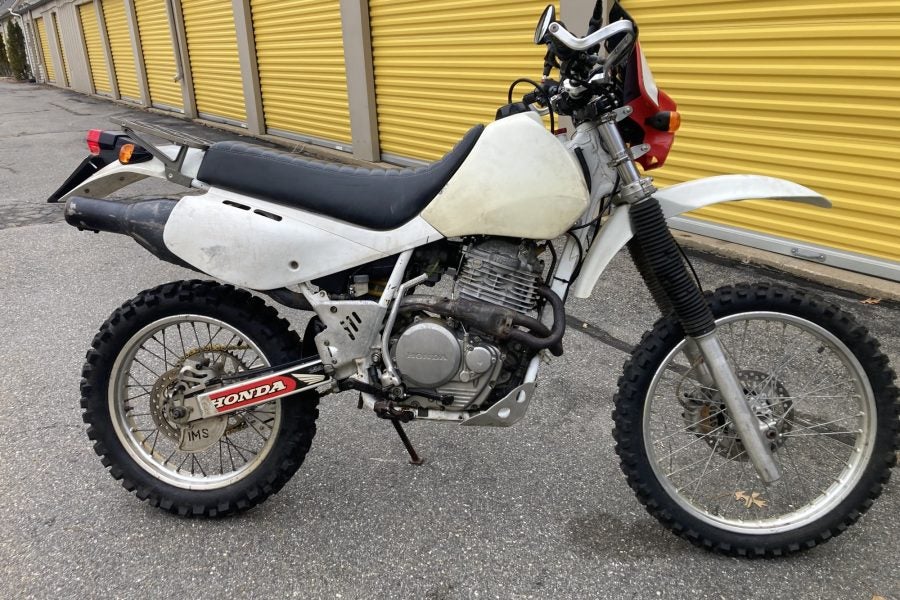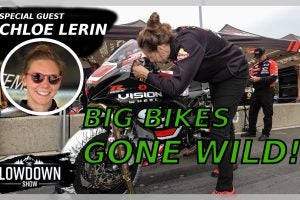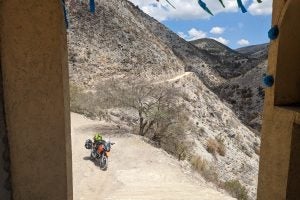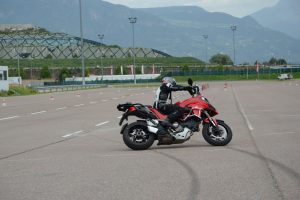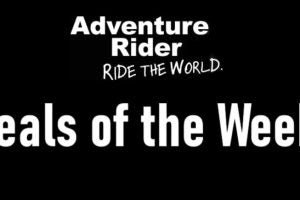It’s not hard, building a fun bike. All you need is reliability, a lightweight chassis that handles OK, and enough power to lift the front wheel and haul you along at extra-legal speeds on the highway. The rest is just dressing-up. And over the course of moto-history, no bikes have demonstrated this principle as well as big-bore singles—and Honda’s XR600R was one of the best of those bikes.
- Photo: heardforit
- Photo: heardforit
- Photo: heardforit
Muscle bike, for the dirt
At its 1985 debut, the Honda XR600R was roughly on-part with its big-bore competitors. It had an air-cooled big-bore single-cylinder engine, with 591 cc capacity, four-valve RVCC head, five-speed gearbox and no e-start (kickstart only). The dual sport world was quickly moving on to liquid-cooled bikes with electric start as standard, but it wasn’t quite there yet… and the XR600 R wasn’t a dual sport bike. This was a dirt bike, made for situations where torque was king.
The 1986 sales brochure laid it all out:
Tall steep hills. Fast fire-roads. You can tackle them with enthusiasm aboard the dirt rider’s muscle bike—the XR600R.
Honda went on to tell its customers that the XR was one of the most powerful dirt bikes the company had ever made, and that was true. It would have been the most powerful four-stroke off-roader they’d built at that point, and it promptly built its reputation as a solid desert racer by taking the win in the Baja 1000’s 1985, 1986 and 1987 races (and again in 1997 and 1998).
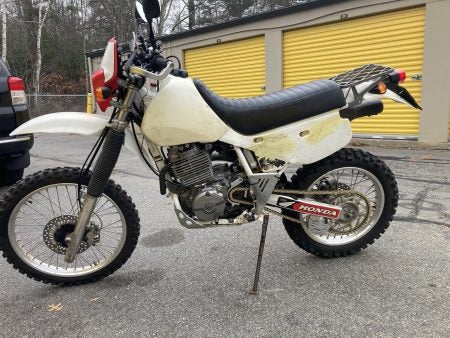
Photo: heardforit
So. The Honda big-bore dirt bike was a desert bike, right? No good for the tight woods for the east, right? Wrong.
After the XR started its winning record in the desert, along came Scott Summers, who won nine—nine—AMA off-road racing titles with the help of his 600.
Let us take a moment to appreciate the talent of Mister Summers, who went to the AMA’s Hall of Fame in 2014:
While it is true that he is the ultimate proof that “It’s the rider, not the bike,” Summers’ wins proved that the XR really could do it all, if the pilot was capable enough.
For Torture Test Magazine’s more modern take on the bike:
Again: The XR is very capable, if you’re capable of handling it.
I think the XR gets a bit of a bad rap for being big and heavy anyway. No, it’s not a 125 2T enduro, but the 1990s models had a cartridge fork, Nikasil-lined cylinder and wet weight around 320 lb. With 46 hp at 6,000 rpm and 38.8 lb-ft of torque (those are crankshaft numbers), this bike had no trouble getting out of its own way. If you were willing to tune things up a bit, it would really move along! Here’s Johnny Campbell’s description of the mods he made to his bike that won the 1998 Baja 1000:
View this post on Instagram
The XR600R might have been a lot of bike, but as Stalin said, “Quantity has a quality of its own.” The XR was big, but it could take a beating.
This bike here
The motorcycle here is a 1998 model, so it has the single-carb setup, engine updates and cartridge fork that Honda threw at the XR over its production run. And then inmate heardforit added some more mods, including the most important modification of all: Street legality!
Titled and Street legal 1998 Honda XR600r in good running condition. Selling as I’m downsizing to just 1 bike. It has a Baja Designs dual sport kit and Vapor speedo unit. Recently had full service including new air filter, oil/filter change, new spark plug, carburetor rebuild, new chain, valve adjustment, brake caliper rebuild front/rear with new pads, stainless steel brake lines, new grips. Aftermarket accessories include XRs only rear rack, chain slider, case saver, rear disc guard, front disc guard, skid plate. Lights, turn signals, and horn work, but turn signals only seem to work when lights are switched off. I can’t figure out why the brake lights aren’t working. It may need an upgraded stator to get these lights working correctly. Maine title in my name.
The asking price is $3,000, and it’s located in Portland, Maine. See more details at the ad here, in ADVrider’s Flea Market.


